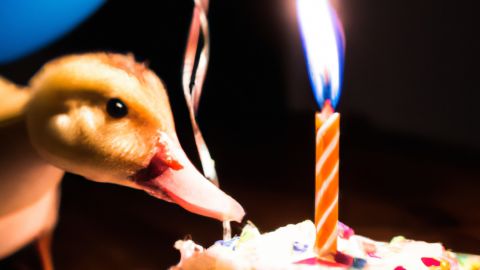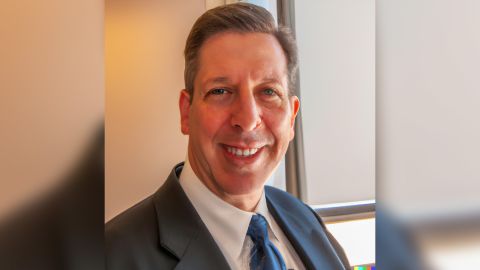
CNN Business
—
For those who’ve ever wished to use synthetic intelligence to rapidly design a hybrid between a duck and a corgi, now is your time to shine.
On Wednesday, OpenAI introduced that anybody can now use the latest model of its AI-powered DALL-E instrument to generate a seemingly limitless vary of photographs simply by typing in a couple of phrases, months after the startup started progressively rolling it out to customers.
The transfer will seemingly increase the attain of a brand new crop of AI-powered tools which have already attracted a large viewers and challenged our basic concepts of artwork and creativity. Nevertheless it could additionally add to issues about how such programs could be misused when broadly out there.
“Studying from real-world use has allowed us to enhance our security programs, making wider availability doable as we speak,” OpenAI stated in a weblog publish. The corporate stated it has additionally strengthened the methods it rebuffs customers makes an attempt to make its AI create “sexual, violent and different content material.”
There are now three well-known, immensely powerful AI programs open to the general public that can soak up a couple of phrases and spit out a picture. As well as to DALL-E 2, there’s Midjourney, which grew to become publicly out there in July, and Secure Diffusion, which was launched to the general public in August by Stability AI. All three provide some free credit to customers who need to get a really feel for making photographs with AI on-line; typically, after that, you might have to pay.

These so-called generative AI programs are already getting used for experimental movies, journal covers, and real-estate advertisements. A picture generated with Midjourney lately received an artwork competitors on the Colorado State Truthful, and brought about an uproar amongst artists.
In simply months, thousands and thousands of individuals have flocked to these AI programs. Greater than 2.7 million folks belong to Midjourney’s Discord server, the place customers can submit prompts. OpenAI stated in its Wednesday weblog publish that it has greater than 1.5 million energetic customers, who’ve collectively been making greater than 2 million photographs with its system every day. (It must be famous that it can take many tries to get a picture you’re pleased with once you use these tools.)
Most of the photographs which were created by customers in current weeks have been shared on-line, and the outcomes can be spectacular. They vary from otherworldly landscapes and a portray of French aristocrats as penguins to a fake classic {photograph} of a person strolling a tardigrade.
The ascension of such know-how, and the more and more difficult prompts and ensuing photographs, has impressed even longtime business insiders. Andrej Karpathy, who stepped down from his publish as Tesla’s director of AI in July, stated in a current tweet that after getting invited to strive DALL-E 2 he felt “frozen” when first making an attempt to resolve what to sort in and finally typed “cat”.

“The artwork of prompts that the group has found and more and more perfected over the previous few months for textual content -> picture fashions is astonishing,” he stated.
However the reputation of this know-how comes with potential downsides. Specialists in AI have raised issues that the open-ended nature of those programs — which makes them adept at producing all types of photographs from phrases — and their means to automate image-making means they could automate bias on an enormous scale. A easy instance of this: Once I fed the immediate “a banker dressed for a giant day on the workplace” to DALL-E 2 this week, the outcomes have been all photographs of middle-aged white males in fits and ties.
“They’re principally letting the customers discover the loopholes within the system by utilizing it,” stated Julie Carpenter, a analysis scientist and fellow within the Ethics and Rising Sciences Group at California Polytechnic State College, San Luis Obispo.

These programs even have the potential to be used for nefarious functions, equivalent to stoking worry or spreading disinformation through photographs which are altered with AI or completely fabricated.
There are some limits for what photographs customers can generate. For instance, OpenAI has DALL-E 2 customers agree to a content material coverage that tells them to not strive to make, add, or share photos “that aren’t G-rated or that could trigger hurt.” DALL-E 2 additionally received’t run prompts that embrace sure banned phrases. However manipulating verbiage can get round limits: DALL-E 2 received’t course of the immediate “a photograph of a duck lined in blood,” however it is going to return photographs for the immediate “a photograph of a duck lined in a viscous purple liquid.” OpenAI itself talked about this kind of “visible synonym” in its documentation for DALL-E 2.
Chris Gilliard, a Simply Tech Fellow on the Social Science Analysis Council, thinks the businesses behind these picture mills are “severely underestimating” the “infinite creativity” of people who find themselves wanting to do unwell with these tools.
“I really feel like that is yet one more instance of individuals releasing know-how that’s kind of half-baked by way of determining the way it’s going to be used to trigger chaos and create hurt,” he stated. “After which hoping that in a while perhaps there can be a way to handle these harms.”
To sidestep potential points, some stock-image companies are banning AI photographs altogether. Getty Photos confirmed to CNN Business on Wednesday that it’ll not settle for picture submissions that have been created with generative AI fashions, and can take down any submissions that used these fashions. This determination applies to its Getty Photos, iStock, and Unsplash picture companies.
“There are open questions with respect to the copyright of outputs from these fashions and there are unaddressed rights points with respect to the underlying imagery and metadata used to prepare these fashions,” the corporate stated in an announcement.
However truly catching and proscribing these photographs could show to be a problem.